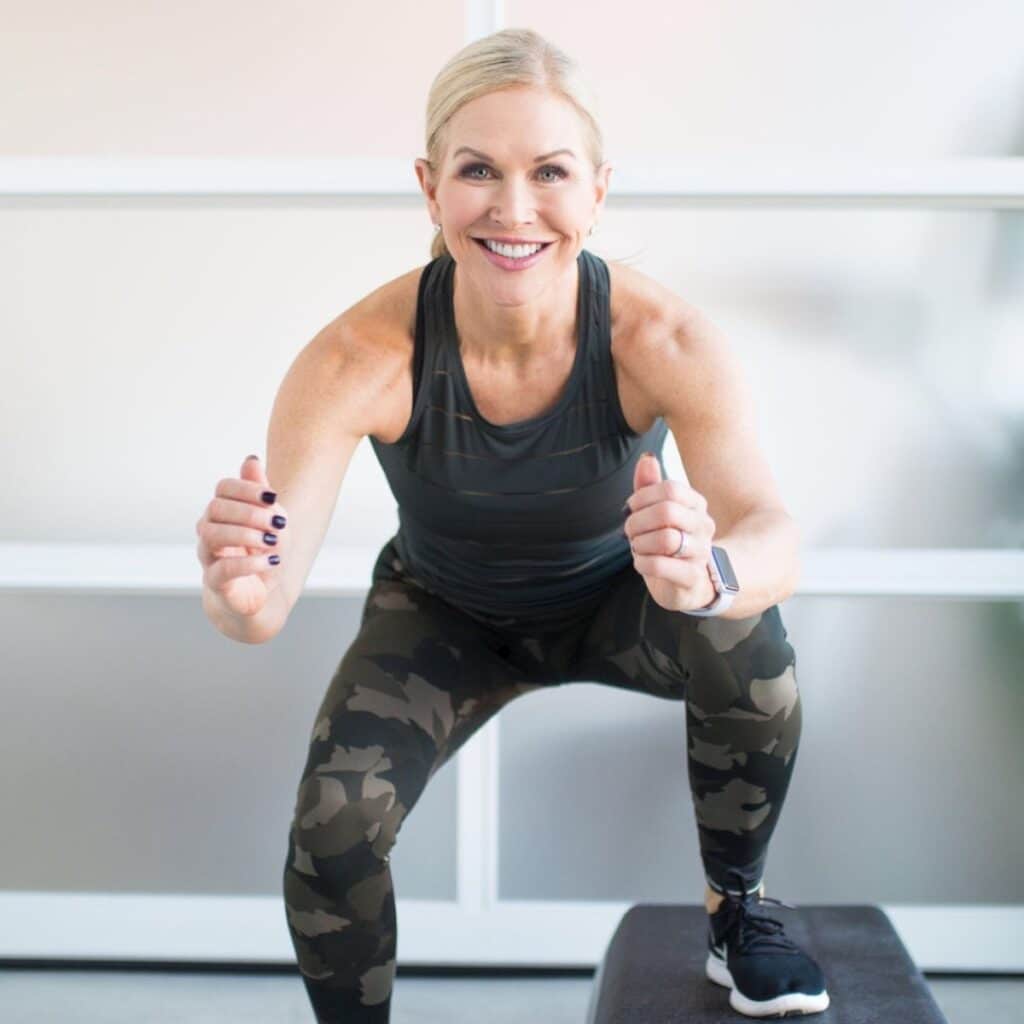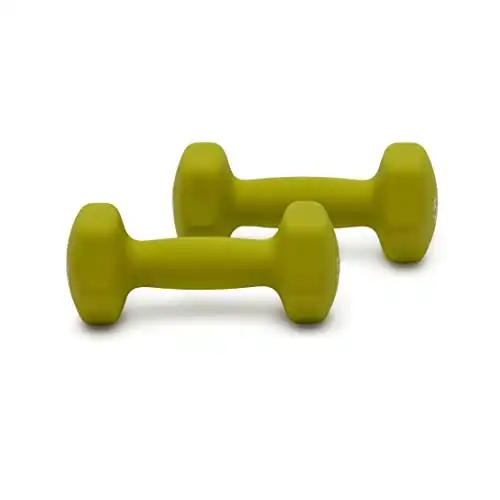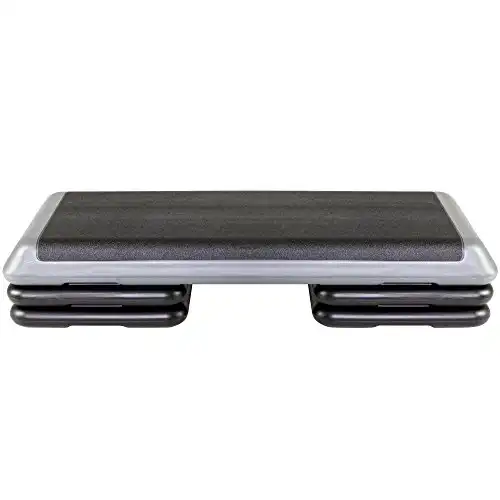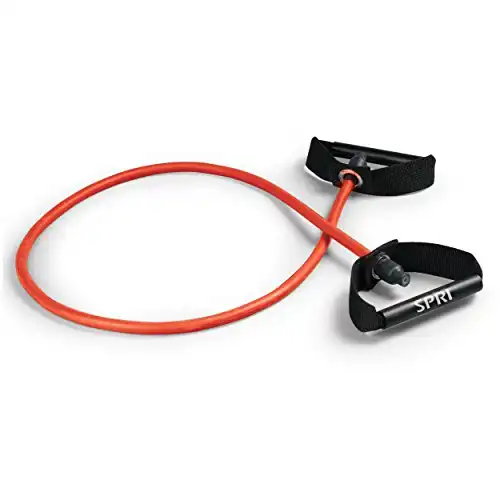This post contains affiliate links. Please see our disclosure policy.
Functional strength training is the key to maintaining mobility and independence at every age. It builds muscles commonly used in everyday activities, making it easier and more enjoyable to move through your day.
If you’re new to the concept of functional fitness, keep reading!
I’m breaking down what exactly it is, how you can incorporate functional workouts into your schedule and the benefits that come with doing that. Plus, I’m giving you my favorite functional strength training exercises to get started with!

Save This Article To Read Later
What Is Functional Strength Training?
Alright, ladies, let’s talk about functional strength training. As we age, many women including myself are switching our reasons for strength training from vanity (aesthetics) to wanting to just move better and be active in our daily life.
I know the term “functional strength” might sound a bit daunting, but trust me, it’s nothing complicated.
In fact, it’s all about getting back to the basics and focusing on movements that mimic everyday activities. As we hit our 40s and beyond, maintaining functional strength becomes crucial for our overall health and well-being.
What Is A Functional Strength Workout?
So, what exactly makes it a workout? Well, picture this: you’re lifting groceries, carrying your grandkids, or even just getting up from a chair. These are all movements that require strength and stability in various muscles throughout your body. A functional strength workout targets those muscles, helping you build strength and endurance for real-life activities.
Now, let’s break it down a bit further.
A typical functional strength workout might include exercises like squats, lunges, push-ups, and rows. These movements engage multiple muscle groups at once, rather than isolating individual muscles like you might do with traditional weightlifting exercises.
This not only saves time but also helps improve coordination and balance, which are essential as we age. (To learn more about this concept, check out which muscles groups are the best to workout together.)
But functional strength isn’t just about lifting weights. It’s also about incorporating movements that challenge your stability and mobility, like balancing on one leg or doing core exercises on an unstable surface.
These types of exercises help improve your body’s ability to move efficiently and reduce the risk of injury in everyday activities.
Is Functional Strength Training Effective?
Absolutely! Functional fitness training is incredibly effective, especially for midlife women. Here are a few reasons why:
Real-World Applicability
Functional training focuses on movements that mimic everyday activities. As we age, it’s vital to maintain strength and mobility for tasks like lifting groceries, bending down to pick something up, or even playing with grandchildren.
By training our bodies to perform these movements effectively, we enhance our ability to navigate daily life with ease.
Prevention of Injuries
Functional strength training targets multiple muscle groups simultaneously, improving overall strength, stability, and coordination. This comprehensive approach helps reduce the risk of injuries, particularly common ones that occur during daily activities or as a result of age-related declines in muscle mass and flexibility.
Improved Functional Capacity
As midlife women, we want to maintain our independence and quality of life for as long as possible. Functional fitness training helps us do just that by enhancing our functional capacity—the ability to perform tasks and activities efficiently and safely.
Whether it’s climbing stairs, carrying groceries, or participating in recreational activities, functional training ensures that we can continue to enjoy life to the fullest.
Enhanced Balance and Mobility
Many functional exercises involve movements that challenge balance and proprioception, which is our body’s awareness of its position in space. By incorporating balance exercises into our workouts, we can improve our balance and reduce the risk of falls—a common concern for older adults.
Here are a few more of my recommendations for building strength, balance, and mobility:
- 15 Best Mobility Exercises to Stay Active at Any Age
- Best Strength Training Moves for Women Over 50
- Exercises to Improve Balance at Any Age
Adaptability
Functional training can be tailored to suit individual needs and fitness levels. Whether you’re a beginner or an experienced exerciser, there are endless variations and progressions to keep your workouts challenging and effective.
Why is Functional Training Important?
Overall, functional fitness training is essential for midlife women because it helps us maintain our independence, prevent injuries, and improve our overall quality of life as we age.
Whether you’re a seasoned gym-goer or just starting out, incorporating functional strength workouts into your routine is key to staying strong, healthy, and independent as you navigate through midlife and beyond.
Remember, it’s not about how much weight you can lift, but how well you can move and function in your daily life. So, let’s get moving and embrace the power of functional strength!
How to Incorporate Functional Strength Training Into Your Workouts
It’s easy to add some of these exercises into your workouts. Do a few each day and spend even 10-15 minutes on some sort of functional training.
Some common functional exercises to include in your workouts include:
- Push-Ups (push motion)
- Mid Back Rows (pull motion)
- Walking Lunges (everyday leg strength)
- Jumping, Lunging, or Stepping onto an Elevated Surface (use your step platform)
- Bodyweight Squats (getting out of a chair)
- Russian Twists (core rotation)
- Single Leg Deadlifts (movements done while balancing on one leg)
Not sure which dumbbell weight to start with? Check out my guide for understanding when to increase your weights!
| Product Image | Product Name | Primary Button |
|---|---|---|






I am in my 50 years of age and I am very concerned about my physical health, my mobility and balance. I know their’s no solution but to keep exercising, this is very important information I need to all my questions.